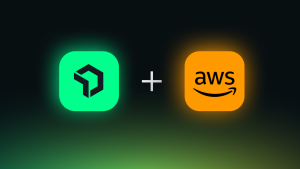At New Relic, we are on a mission to make the lives of every engineer easier. That’s why, back in mid-2020, we announced that we are taking an open sourced approach to instrumentation to make it easier to gather complete telemetry from software and systems. We open sourced several of our agents at the time and pledged to open source our New Relic Browser agent in 2021. Recently, we doubled-down on our open source commitment with the announcement that we are now a Platinum member of the Cloud Native Computing Foundation (CNCF) and Zain Asgar, GM of Pixie and New Relic Open Source, is joining the CNCF governing board.
This month we continued our open source mission with the announcement that our browser real user monitoring agent is now open source. The open sourced New Relic Browser agent source code can be found here on New Relic’s GitHub organization: newrelic-browser-agent. By open sourcing our Browser agent, we believe it will provide you with complete transparency about the code you deploy to your systems. We can also better engage with you on your feedback and accelerate innovation and quality of our browser monitoring product.
What is New Relic’s Browser agent?
New Relic’s Browser agent offers real user monitoring (RUM), collecting data from real user sessions to understand application performance. The Browser agent monitors users as they navigate from web browsers, devices, operating systems, and networks. It identifies issues such as slow page loads, javascript errors, slow AJAX requests, or even slow route changes in single-page application (SPA) architectures that you can take action on to improve the customer experience.
The Browser agent also shows page view popularity and captures user satisfaction (Apdex). It monitors session performance with a detailed timeline and heat map of the load and interaction events during a webpage's full life cycle.
Go beyond page performance to track user perception
While real user data gives insights into page performance, the Browser agent goes further, giving visibility into your users' perception of your site's performance. Pages can load content in many different ways, and users control when they interact with that content. This is why some user-centric performance metrics happen outside the standard window onload (page load time) in the browser monitoring agent. We have included perceived performance metrics into the agent so that you know what your users are experiencing. Specifically, Google’s Core Web Vitals and metrics such as Largest Contentful Paint (LCP), First Input Delay (FID), and Cumulative Layout Shift (CLS).
Finally, the Browser agent takes a full-stack observability approach through its use of distributed tracing (DT). Use our SPA agent and turn on DT to follow requests from browser activity to time spent in network to backend activity.
How to set up and contribute to the Browser agent
Ready to start contributing to the Browser agent?
- First, instrument your site. Check out this short video on how to add browser instrumentation to your site in minutes.
- After you instrument your site, there are a few steps to start contributing to the Browser agent:
- Navigate to our Open Source site to review all of the open projects. Or you can go directly to our Browser agent page to get started.

- Next, read the Contributor’s Guide (or quickly review the following screen capture):

- After that, it’s up to you what you want to contribute. You can request a new feature or report a bug. Submit on the Issue Tracker, or fork a repository to start contributing right away.
To learn how to install, configure, and test the Browser agent, and walk through submitting an issue or pull request, see Nerdlog Roundup: Our Browser Monitoring Agent Is Open Source.
Next steps
You can get started with contributing feedback and increasing the innovation and quality of our browser monitoring product at any time. Want a step-by-step guide to contributing to open source? Check out our Beginner’s Guide. Or dive right in by going to the New Relic Browser agent open source project.
The views expressed on this blog are those of the author and do not necessarily reflect the views of New Relic. Any solutions offered by the author are environment-specific and not part of the commercial solutions or support offered by New Relic. Please join us exclusively at the Explorers Hub (discuss.newrelic.com) for questions and support related to this blog post. This blog may contain links to content on third-party sites. By providing such links, New Relic does not adopt, guarantee, approve or endorse the information, views or products available on such sites.



